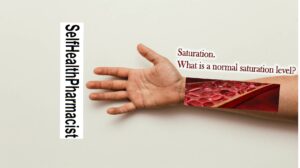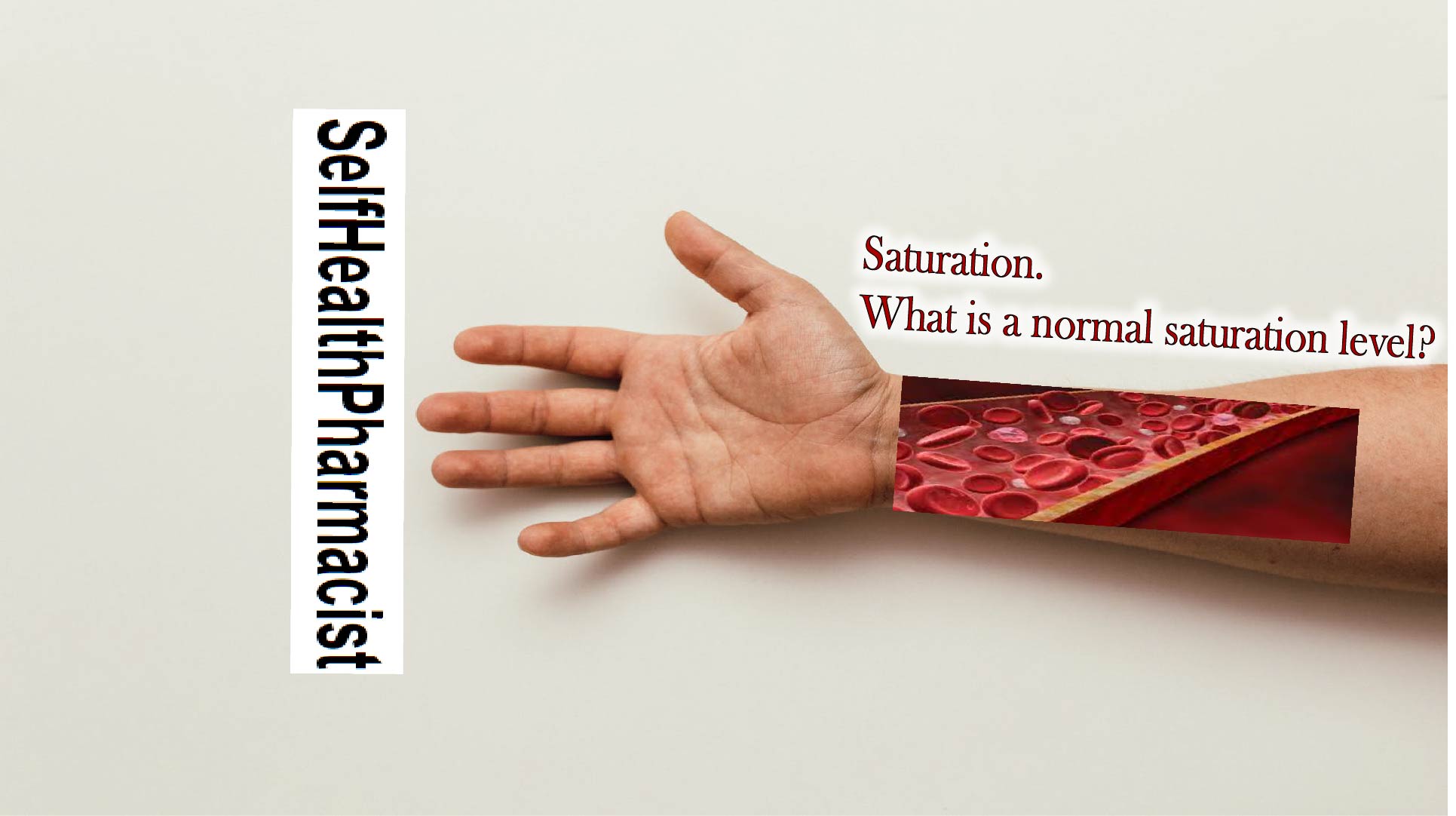I have already written the article about “Pulse Oximeters and a Right Index of a Saturation” HERE PART 1 and today I want to cover a whole saturation topic in even more detail.
Well, Let’s get started …
I want to remind you that Saturation shows how oxygenated the blood is. Hemoglobin is responsible for oxygen transport, it is found in erythrocytes – red blood cells.
The higher the saturation, the more oxygen in the blood and the better it is delivered to the tissues.
Table of Contents
Are you looking for a good pulse oximeter?
I believe the Wellue O2 Ring is the best choice for overnight oxygen saturation monitoring.
I would recommend choosing the Wellue O2 Ring . I think it is the latest technology of pulse oximeters.
It is the best choice for overnight oxygen saturation monitoring and health monitoring.
It has accurate tracking of all indicators and very common features such as oximetry Technologies, waterproof resistance, smart alarms and saturation alerts.
Let’s remind ourselves What a normal Oxygen Level Is?
The saturation rate for a healthy person is considered to be 95% or more of hemoglobin associated with oxygen. This is saturation – the percentage of oxyhemoglobin in the blood.
With COVID-19, it is recommended to call a doctor when the saturation drops to 94%. Saturations of 92% and below are generally considered to be critical. A person with such a low blood oxygen level needs urgent medical attention.
There are exceptions. For example, in severe chronic obstructive pulmonary disease, which is common in smokers, the saturation index can be from 88% to 92%.
Usually the body of such people is adapted to a lower level of oxygen. If you have a pulmonological disease, your doctor will tell you which saturation value should be an alarm for you.

It is important to understand that the result of pulse oximetry can be affected by: the sensitivity of the device (including battery power), lighting, the color of the patient’s skin (the darker, the higher the indicator, which does not reflect the real state of affairs).
The concept of “saturation rate” is very conditional. It happens that patients with signs of a coronavirus infection and a mobile non-invasive device for measuring saturation begin to panic and call an ambulance if the oxygen in the blood drops to, for example, 93%.
Why Saturation fall?
Not all patients with COVID-19 have reduced saturation, but only with the development of a complication – viral pneumonia.
A decrease in saturation indicates probable respiratory failure. If a coronavirus infection has penetrated the lung tissue, and the human immunity cannot cope with it, a destructive process begins in the lungs.
The alveolar septa (and interstitium) are damaged and inflamed, and the alveoli themselves are filled with liquid exudate – normally they are filled with air and are the starting point of transportation oxygen to organs, including the heart and brain.
Since no damage to the bronchi is observed with coronavirus, a decrease in saturation in a patient may indicate a reduction in functional areas of the lung tissue.
What might occur if the oxygen saturation level is 85 to 90?
Try holding your breath for a few seconds – if you can’t hold your breath for as long as you used to, and this action causes difficulty, it makes sense to measure the saturation.
Usually when the saturation is 85 to 90 the following symptoms arise:
- Your breathing and heart rate have increased.
- The skin turned pale and acquired a bluish tint (face, lips, fingertips).
- You feel very tired and sleepy.
- Headache and dizziness, problems with memory and concentration.
- You have some symptoms of a respiratory disease: shortness of breath, discomfort and unusual sensations in the chest, coughing.

When is hospitalization and oxygen support needed?
The decrease in saturation is dangerous primarily for these groups of patients:
- If the indicator has dropped to 93%, and the patient feels unwell (hypoxemia, respiratory failure, respiratory symptoms are pronounced).
- With a significant percentage of lung lesions on CT (> 50%, with CT-3, CT-4).
- The advanced age of the patient.
- Concomitant chronic diseases of the respiratory system.
- Concomitant chronic diseases of the cardiovascular system.
- Initially low saturation on the background of anemia.
- Pregnant women.
- Patients with immunodeficiency.
- Obese patients. With diabetes.
Popular FAQ of Low oxygen levels in the blood of healthy people. What Is A Normal Oxygen Level?
Low oxygen levels in the blood shortness of breath, coughing, and sputum indicate lung involvement.
Low saturation reflects hypoxia and oxygen starvation. Lungs can not cope with the delivery of oxygen to the cells.
Metabolic disorders occur in all organs and tissues. Anaerobic processes begin in cells with the release of a large amount of harmful substances, which disrupts the functioning of the body at the cellular level.
Is 94 a good oxygen level? Is 95 a good oxygen level?
If the saturation is below 95% with coronavirus, the patient may be hospitalized.
What happens when your oxygen level drops to 70?
Usually, at 70% saturation patients are already connected to artificial lung ventilation and intubated (a manipulation is performed during which a special tube is installed in the airways to provide artificial pulmonary ventilation
What if my oxygen level is 80 %?
It is necessary to determine the saturation of the blood with oxygen. It can be seen that, for example, instead of the prescribed 98, the saturation in a person is 80, or even lower, which means it is clear that there is a violation of the oxygenation of the body.
This is a clear sign of hypoxia of the body. The appearance of symptoms such as shortness of breath, shortness of breath on exertion.
The manifestation of inflammation, bronchitis, that is, coughing, sputum is manifested, which means that a bacterial infection has joined.
What if my oxygen level is 91?
Low saturation, including with coronavirus, indicates hypoxemia, which requires urgent action.
It is necessary to raise the level of oxygen in the lungs and blood to prevent complications, and sometimes to save the patient’s life.
Is oxygen level 92 OK? Is oxygen saturation 92 normal?
The only explanation for this case may be chronic respiratory failure in the patient. Then the saturation in a person is constantly reduced and he/she has already adapted to it.
This happens, for example, in severe and extremely severe courses of chronic obstructive pulmonary disease (a disease in which there is a restriction of the passage of air flow in the respiratory tract.
Is 93 a good blood oxygen level?
Older people often have vascular atherosclerosis, this can also lead to the fact that saturation can be underestimated. Therefore, when we measure saturation, we need to look at it on all fingers.
If you see a saturation below 93, then first try on all fingers, measure longer, if there is no increase on any of the fingers, this is an ambulance call.
Do people have 45-46 % oxygen level?
46% is a very low saturation percentage. This is a sign of severe respiratory failure (RD), so there are some incomprehensible contradictions in turn.
Such an indicator of oxygen saturation is the last degree of DN. If a person can speak at the same time, then he/she will have a very pronounced clinical picture – shortness of breath and a blue skin color will appear, which will appear even at rest.
Is 110 saturation normal?
Normal saturation values are from 94-96%, and can reach up to 99-110%.

